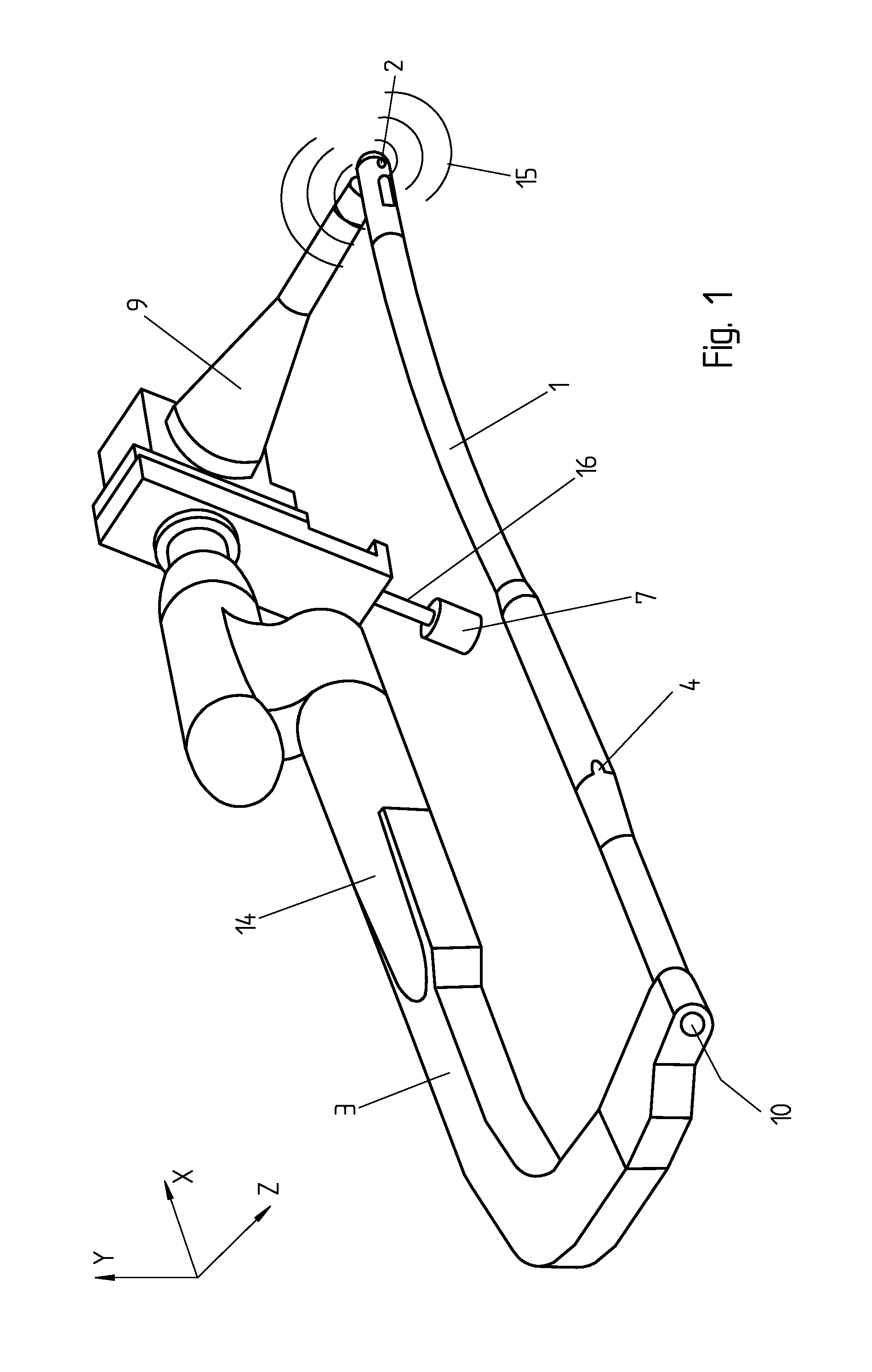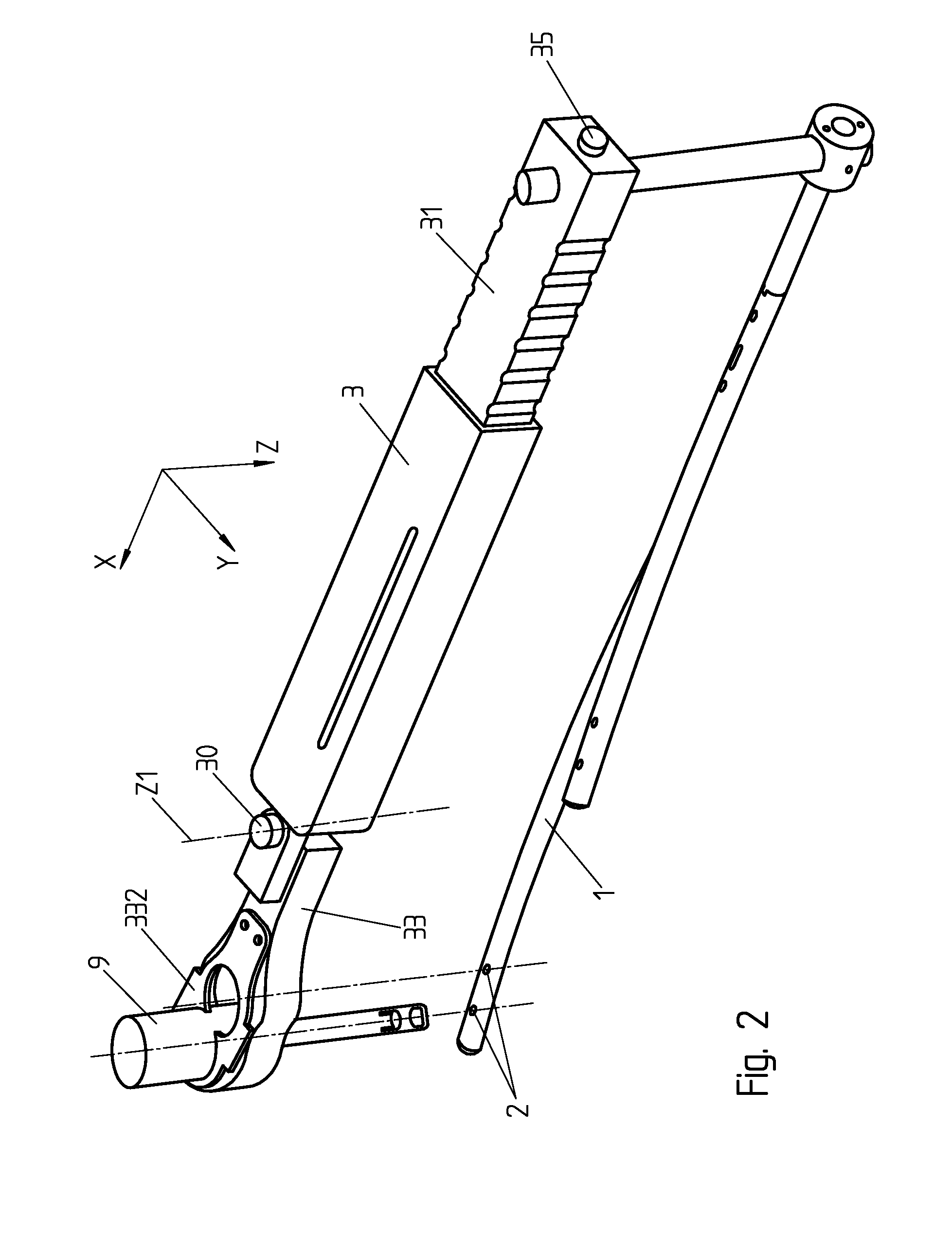Device for positioning and adjusting a viewing axis
a technology of viewing axis and device, which is applied in the field of improving the device for positioning the viewing axis, can solve the problems of complex infrastructure, inability to guarantee optimal accuracy, and high cost, and achieves the effects of simple execution, convenient use, and improved accuracy
- Summary
- Abstract
- Description
- Claims
- Application Information
AI Technical Summary
Benefits of technology
Problems solved by technology
Method used
Image
Examples
first embodiment
[0039]FIG. 1 is a perspective view of a viewing device according to the invention. The axis X corresponds to the longitudinal axis of the undeformed nail 1 and the axis Z (viewing axis) corresponds to the axis of the viewing device 9 and of the undeformed distal fixation hole 2 (the hole). The rigid support 3 makes it possible to position the viewing device 9 relative to the nail. The reference number 4 indicates a shape-keyed connection 4 where the support 3 is fastened onto the nail 1.
[0040]A removable sleeve 14 allows the length of the rigid support 3 to be adapted depending on the length of nail used; this is not a precise or fine adjustment but only a possibility of adapting to nails of different standard lengths, typically by increments of several centimeters. In one embodiment, the length of the rigid support can be modified by selecting an assembly part, such as the sleeve 14 of FIG. 1, depending on the length of the nail 1.
[0041]The viewing device 9 can be moved closer to o...
second embodiment
[0050]FIG. 2 illustrates in perspective a device according to the invention wherein the adjustment of the position of the viewing device 9 is made essentially by a rotational movement around an axis Z1 parallel to the viewing and drilling axis / . The device comprises a rigid support 3, for example of carbon fiber, telescopic with an extension portion 31 that makes it possible to coarsely adapt the length of the support along the axis X depending on the length of the nail 1; the adjustment is done advantageously in successive increments, for example in increments spaced by 20 mm or adapted to the available range of length of nails. A scale on the inner tube 31 can be displayed in a window, not represented, in the outer tube 3 in order to indicate the length currently selected. Holding is advantageously achieved by elastic deformation (clipsing) of the increments of the telescopic portion. In another variant illustrated on the FIG. 3, the indexing of the extension length of the telesco...
PUM
 Login to View More
Login to View More Abstract
Description
Claims
Application Information
 Login to View More
Login to View More - R&D
- Intellectual Property
- Life Sciences
- Materials
- Tech Scout
- Unparalleled Data Quality
- Higher Quality Content
- 60% Fewer Hallucinations
Browse by: Latest US Patents, China's latest patents, Technical Efficacy Thesaurus, Application Domain, Technology Topic, Popular Technical Reports.
© 2025 PatSnap. All rights reserved.Legal|Privacy policy|Modern Slavery Act Transparency Statement|Sitemap|About US| Contact US: help@patsnap.com



